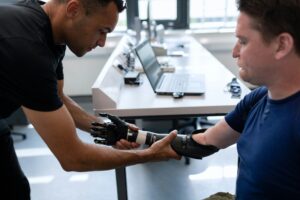Train to be a doctor at 40
Train to become a doctor at 40 is indeed possible, although it may require careful planning, dedication, and perseverance. Here’s a detailed exploration of the considerations, pathways, and opportunities for individuals pursuing a medical career later in life:
-
Assess Your Motivation and Commitment
Before embarking on the journey to become a doctor at 40, it’s essential to assess your motivation, commitment, and readiness for the rigorous demands of medical education and training.
-
Research Medical School Requirements and Prerequisites
Research the admission requirements and prerequisites for medical school programs to ensure that you meet the necessary academic qualifications and prerequisites.
Many medical schools require applicants to have completed specific undergraduate coursework in science and mathematics, as well as prerequisite courses such as biology, chemistry, physics, and organic chemistry. Some schools may also require standardized test scores, such as the MCAT (Medical College Admission Test). -
Explore Different Pathways to Medical School
There are various pathways to medical school, including traditional four-year MD programs, accelerated programs, post-baccalaureate programs, and combined degree programs (e.g., MD-PhD or MD-MPH).
Consider which pathway aligns best with your academic background, career goals, and personal circumstances. Non-traditional pre-medical programs and post-baccalaureate programs cater to individuals with diverse backgrounds and experiences, offering additional support and resources to prepare for medical school. -
Complete Pre-Medical Requirements and Prerequisites
If you haven’t already completed the necessary pre-medical requirements and prerequisites, you may need to enroll in additional coursework or post-baccalaureate programs to fulfill these requirements.
Work closely with academic advisors, pre-medical advisors, or admissions consultants to develop a personalized plan to complete the necessary coursework and strengthen your academic profile for medical school admission. -
Prepare for the Medical College Admission Test (MCAT)
The MCAT is a standardized test required for admission to most medical school programs in the United States and Canada. It assesses your knowledge of biological and physical sciences, critical thinking skills, and ability to apply scientific principles to medical practice.
Dedicate sufficient time to prepare for the MCAT exam, utilizing study materials, practice tests, and preparatory courses to maximize your performance on the exam.
-
Gain Clinical Experience and Exposure
Clinical experience is essential for demonstrating your commitment to medicine and gaining insight into the healthcare profession. Seek opportunities to volunteer or work in clinical settings, such as hospitals, clinics, or medical practices.
Shadowing physicians, participating in medical missions, or volunteering in underserved communities can provide valuable exposure to diverse patient populations and healthcare environments.
-
Apply to Medical School and Navigate the Admissions Process
Prepare a strong medical school application that highlights your academic achievements, clinical experience, extracurricular activities, and personal attributes.
Craft compelling personal statements, secure strong letters of recommendation, and thoroughly research medical school programs to identify those that align with your interests, values, and career goals.
Be prepared to address questions about your decision to pursue medicine later in life during interviews and admissions discussions, emphasizing your maturity, life experience, and dedication to the medical profession.
-
Navigate Medical School Education and Training
Once accepted to medical school, you will embark on a rigorous journey of medical education and training, encompassing classroom learning, clinical rotations, and hands-on experience in healthcare settings.
Embrace the challenges and opportunities of medical school, seek mentorship and support from faculty and peers, and remain focused on your long-term goal of becoming a physician.
-
Consider Specialization and Residency Training
Upon completing medical school, aspiring doctors must complete residency training in their chosen specialty or subspecialty. Residency programs typically last three to seven years, depending on the specialty.
Consider the various medical specialties and subspecialties available, explore your interests and aptitudes, and seek guidance from mentors and advisors as you navigate the residency match process.
-
Embrace Lifelong Learning and Professional Development
A career in medicine is a lifelong journey of learning, growth, and professional development. Stay abreast of advancements in medical knowledge, technology, and patient care practices.
Engage in continuing medical education (CME) activities, pursue board certification in your specialty, and participate in professional organizations and societies to network with colleagues, share best practices, and contribute to the advancement of medicine.
Training to becoming a doctor at the age of 40 is a challenging yet achievable goal for individuals with a passion for medicine, a strong academic foundation, and a commitment to lifelong learning. By carefully planning your educational pathway, gaining relevant experience, and navigating the medical school admissions process, you can embark on a rewarding journey to fulfill your dream of practicing medicine and making a difference in the lives of patients and communities.





